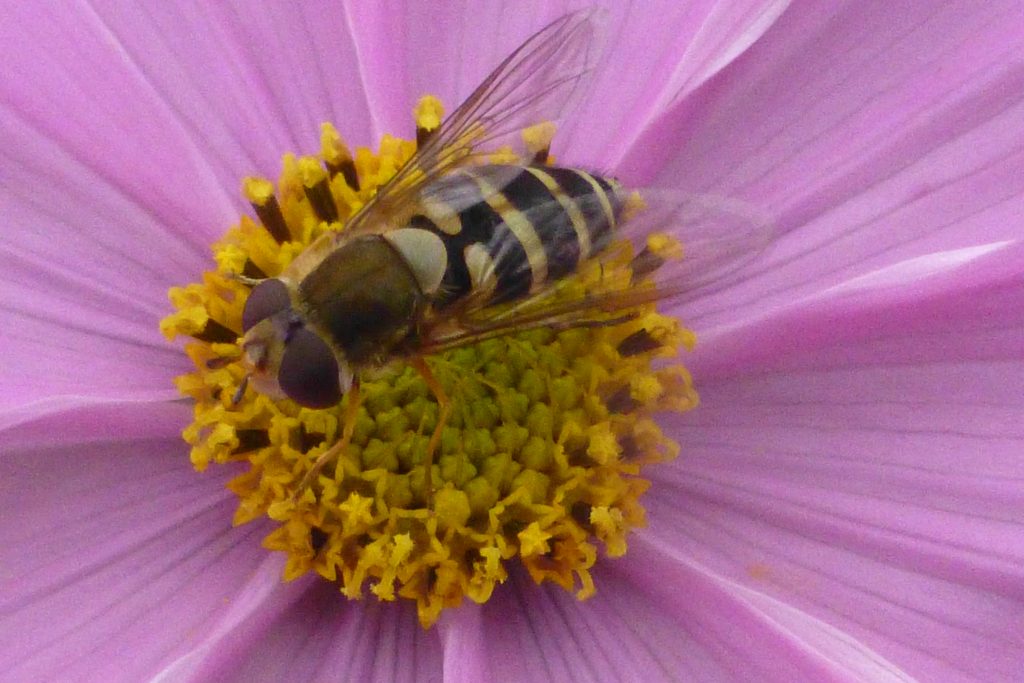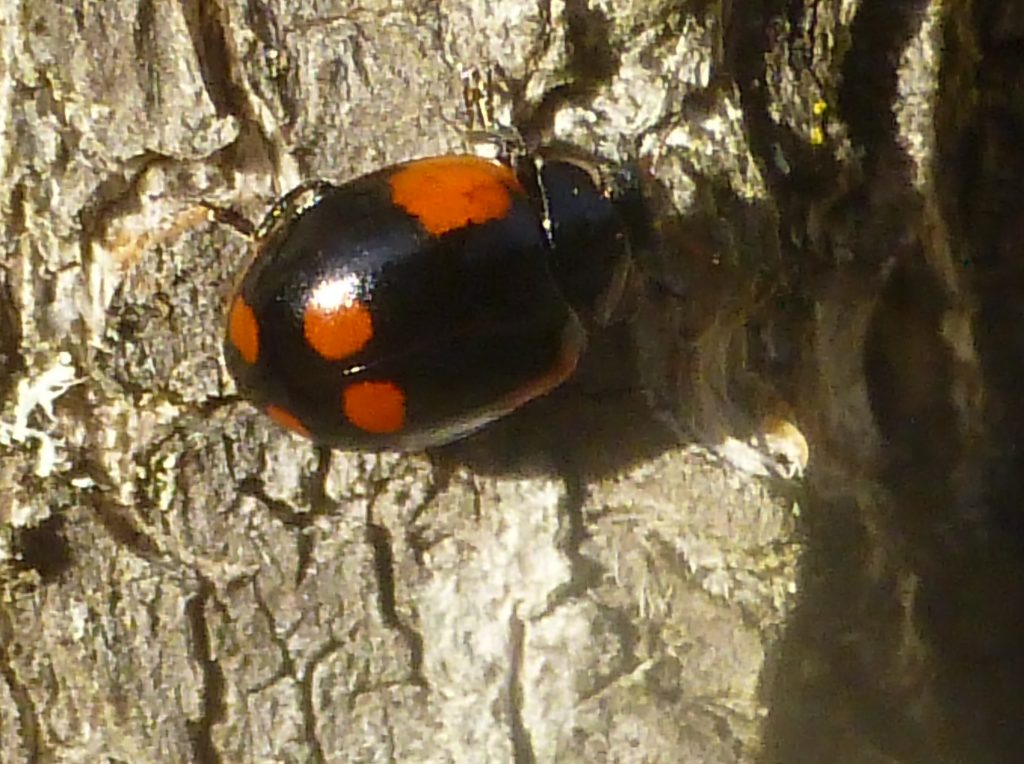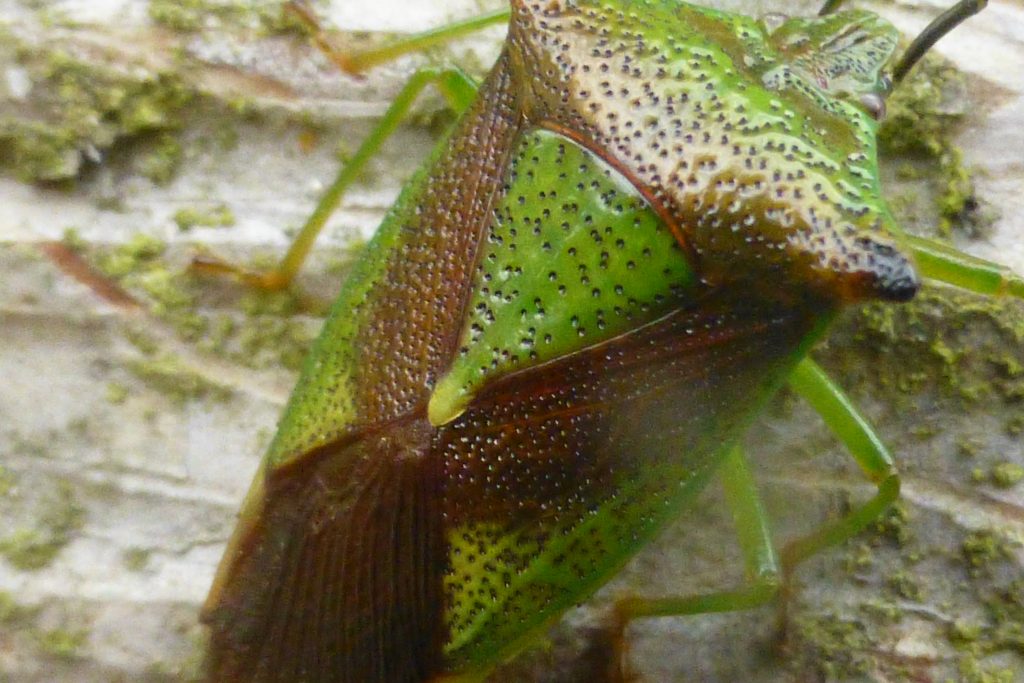October 2016 continued being mild and quiet with mostly easterlies for the first three weeks. The last week saw a change to westerly winds and the arrival of Atlantic weather fronts but they brought little in the way of rain to the city although the last few mornings were foggy or misty around sunrise. Heavy rain fell overnight on the 31st. Two more species were added to the Garden’s wildlife list, taking it from 851 to 853.
Birds Country-wide, October was remarkable for rare migrants, with two species (Siberian Accentor and Eastern Kingbird) being added to the British list. However, by contrast, it was a very dull month for birds here in the Garden with only 30 species being recorded, almost all of them either residents or regular visitors. A Pheasant was seen on 4th, and migrating skeins of Pink-footed Geese flew over on at least 12th and 18th. There was a male Blackcap at the Chinese Hillside on 25th. No winter thrushes or other winter migrants were seen in the Garden but Song Thrush was heard singing twice – for the first time since the spring. For the second month running, Feral Pigeons, for so long a daily feature of the Garden, were conspicuously absent throughout the month, as was Grey Heron. The complete list of 30 species recorded during October was: Blackbird, Blackcap, Black-headed Gull, Blue Tit, Bullfinch, Carrion Crow, Chaffinch, Coal Tit, Dunnock, Goldfinch, Great Spotted Woodpecker, Great Tit, Greenfinch, Herring Gull, Jackdaw, Long-tailed Tit, Magpie, Mallard, Moorhen, Oystercatcher, Pheasant, Pink-footed Goose, Robin, Siskin, Song Thrush, Sparrowhawk, Tawny Owl, Tree Creeper, Wood Pigeon, Wren.
Insects and other invertebrates: Even though there was plenty of sunshine, not a single butterfly was seen during October, in contrast to previous years when Red Admirals and Peacocks at least have been out and about. This ties in with the national scene this year, which, according to reports in the national press in the past week or two, has been a very poor one for many of our common species. There were no moth trapping sessions but the mines of nine leaf-mining moths were recorded. At least a few Honey Bees remained active till the end of the month but bumble-bee activity gradually tailed off, with only a single Common Carder Bee being seen in the final week (on 31st). Tree Bumblebee was recorded three times (3rd, 4th and 21st); it especially seemed to enjoy visiting the yellow flower-heads of a tall Ligularia species by the Pond. Wasps were also not seen after 19th. No dragonflies were recorded. Hoverflies remained active till the month’s end, with seven species being seen although most records were of Common Banded Hoverfly and the drone-flies Eristalis pertinax and Eristalis tenax. The mines of 20 different species of leaf-mining fly were seen, of which Phytomyza cirsii was one of the month’s two new Garden records. Bug sightings included several of Common Flower Bug as well as Gorse, Hawthorn, Parent and especially Birch Shieldbugs. Two-spot and Seven-spot Ladybirds were each recorded once, on 3rd and 25th respectively. October’s second new Garden record (on 5th) was the mine, on oak leaves, of the beetle Orchestes pilosus. Garden Spider was seen on 5th and the galls of three mite species persisted on the yellowing leaves of lime and alder. Finally, a Common Shiny Woodlouse was seen climbing up the back wall of the Herbarium building on 21st.



